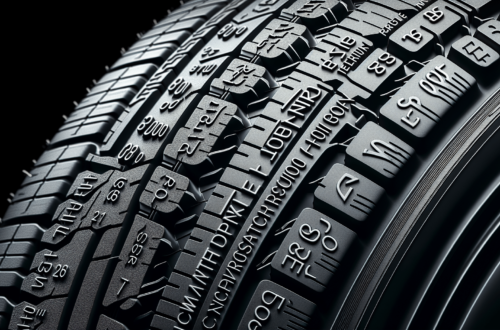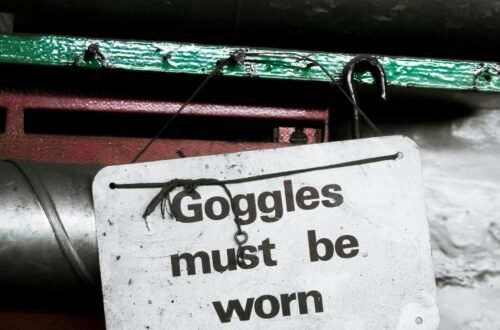Hey there! We’ve all been there – the dreaded moment when you’re driving and suddenly, your tire blows out. Don’t panic though, because I’m here to help you navigate through this stressful situation with ease. In this article, I’ll share some practical tips on how to handle emergency tire failures so you can get back on the road safely in no time. Stay calm, take a deep breath, and let’s tackle this together! Have you ever found yourself in a situation where you experienced a sudden tire failure while driving? It can be a daunting and stressful experience, but knowing how to handle emergency tire failures can make all the difference. In this article, you will learn valuable tips and steps to navigate through unexpected tire issues with confidence and ease. Let’s dive in and explore the best practices for managing emergency tire failures.

This image is property of images.unsplash.com.
Understanding the Different Types of Tire Failures
When faced with a tire emergency, it’s essential to first understand the different types of tire failures that can occur. By recognizing the specific issue, you can take appropriate action to address the problem effectively.
Blowout
A blowout occurs when a tire rapidly loses air pressure, leading to a sudden bursting of the tire. This can be caused by various factors such as overloading, underinflation, or road hazards.
Flat Tire
A flat tire is characterized by gradual deflation due to causes like punctures, leaks, or damaged valve stems. While it doesn’t involve a sudden blowout, a flat tire can still compromise your vehicle’s handling and safety.
Tread Separation
Tread separation happens when the tread of the tire detaches from the casing, resulting in an unstable and unsafe driving condition. This can be caused by manufacturing defects, improper maintenance, or extreme driving conditions.
Understanding these different types of tire failures will help you identify the issue quickly and take the necessary steps to address it.
Preparing for Emergency Tire Situations
Being prepared for an emergency tire situation can make a significant difference in how you handle the incident. By taking proactive steps and being equipped with the right tools, you can navigate through unexpected tire failures more effectively.
Tire Maintenance
Regular tire maintenance is key to preventing emergency tire failures. Make sure to check your tire pressure, tread depth, and overall tire condition regularly. Proper inflation and alignment can prolong the life of your tires and reduce the risk of sudden failures.
Emergency Kit
It’s essential to have an emergency kit in your vehicle that includes items like a spare tire, jack, lug wrench, tire gauge, flashlight, and gloves. These tools will come in handy in case of a tire emergency and can help you address the issue promptly.
Roadside Assistance
Having roadside assistance coverage can provide peace of mind in the event of a tire emergency. Whether it’s through your insurance provider or a separate service, having access to professional help can make a significant difference when faced with a challenging situation on the road.
By preparing ahead of time and staying proactive with tire maintenance and emergency tools, you can be better equipped to handle unforeseen tire failures.
Steps to Take During a Tire Emergency
When faced with a tire emergency on the road, it’s crucial to remain calm and take decisive action to ensure your safety and the safety of others. Following these steps can help you navigate through the situation effectively.
Slow Down and Signal
If you experience a tire failure while driving, the first thing to do is to slow down gradually and safely pull over to the side of the road. Use your turn signal to indicate your intention to other drivers and make your way to a safe stopping point.
Assess the Damage
Once you’ve come to a stop, assess the extent of the tire damage. Check if you have a blowout, flat tire, or tread separation. This will help you determine the severity of the situation and the next steps to take.
Activate Hazard Lights
After pulling over, activate your hazard lights to alert other drivers that you are experiencing an emergency situation. This will help increase your visibility and reduce the risk of accidents while dealing with the tire problem.
Exit the Vehicle Safely
Before addressing the tire issue, ensure that it is safe to exit your vehicle. Check for oncoming traffic and exit the vehicle from the side away from the traffic flow. This will reduce the risk of being hit by passing vehicles.
Change the Tire or Call for Assistance
Depending on the severity of the tire failure and your comfort level with changing a tire, you can choose to either replace the tire yourself or call for roadside assistance. If you decide to change the tire, follow the steps outlined in your vehicle’s owner’s manual for proper tire changing procedures.
Continue Driving with Caution
If you have successfully replaced the tire or received assistance, continue driving with caution. Make sure to monitor your vehicle’s handling and take it slow until you can reach a safe location to fully assess the tire situation.
By following these steps and staying composed during a tire emergency, you can manage the situation effectively and ensure a safe outcome.
Preventing Future Tire Failures
While it’s essential to know how to handle emergency tire failures, taking steps to prevent future incidents is equally crucial. By practicing proper tire care and maintenance, you can reduce the risk of unexpected tire issues and enhance your overall driving safety.
Check Tire Pressure Regularly
Maintaining the correct tire pressure is essential for optimal performance and safety. Check your tire pressure at least once a month and before long drives to ensure that your tires are properly inflated.
Inspect Tread Wear
Monitoring your tire tread wear is crucial for identifying potential issues early on. Use the penny test to check tread depth and look for signs of uneven wear, which can indicate alignment issues or improper inflation.
Rotate Tires
Regularly rotating your tires can help promote even wear and extend the life of your tires. Follow your vehicle manufacturer’s recommendation for tire rotation intervals to maximize tire performance.
Avoid Overloading
Overloading your vehicle can put excessive strain on your tires, leading to premature wear and potential failures. Be mindful of your vehicle’s weight capacity and avoid exceeding it to maintain proper tire health.
Drive Conservatively
How you drive can also impact the health of your tires. Avoid sudden stops, accelerations, and sharp turns that can increase tire wear and strain. Drive cautiously to preserve the integrity of your tires and promote longevity.
By incorporating these preventative measures into your regular maintenance routine, you can significantly reduce the likelihood of experiencing emergency tire failures in the future.

This image is property of images.unsplash.com.
Conclusion
Facing a tire emergency can be a stressful and challenging situation, but being prepared and knowing how to handle the issue can make all the difference. By understanding the different types of tire failures, preparing for emergencies, and taking decisive steps during tire incidents, you can navigate through unexpected situations with confidence and ease. Remember to stay calm, assess the damage, and take proactive measures to address the tire failure promptly. By prioritizing tire maintenance, proactive preparedness, and preventative care, you can ensure a safer and more secure driving experience for yourself and your passengers. Stay safe, and happy driving!





